|




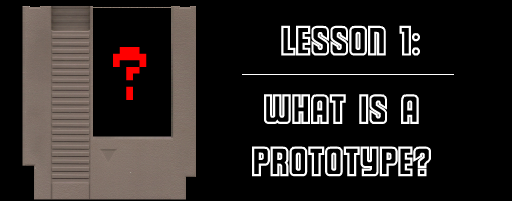
A prototype
is any version of a video game produced before the final, released
game. In the case of a video game that was never commercially
sold ("unreleased"), any version of such a game is a
prototype.
A prototype
can go by several different names like sample,
dev cart, demo,
alpha,
beta,
pre-release, preview,
and review copy (among others).
There has been a lot of debate on what makes a prototype a prototype,
but just to reiterate, any version produced before the final game's
release is a prototype according to my definition. Alpha
refers to a considerably early build
(or version) of a game, whereas beta
refers to a game in a later stage of development nearing QA
(Quality Assurance,
i.e. bug testing) approval. I will go more into specific examples
of prototypes in the next section. For now, though, let's begin
by exploring why you should care about prototypes in the first
place.
The greatest
allure of collecting a prototype of a released game is the possibility
of finding changes not seen in the final version.
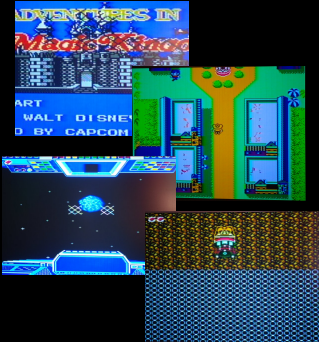
These changes
could mean experiencing early or not-yet-developed graphics and
unpolished gameplay as in this Adventures
in the Magic Kingdom prototype. In this prototype, the
tile graphics on top of the Main Street, USA stores are not yet
drawn; the title screen is crossed out; several sprites in the
game are different or missing in cutscenes and such levels as
Space Mountain; and some buggy gameplay exists in the Big Thunder
Mountain Railroad level that can result in the train derailing
and entering a field of zeroes before crashing into an undeveloped
track.
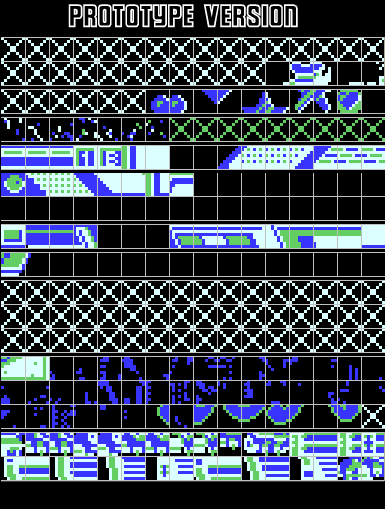
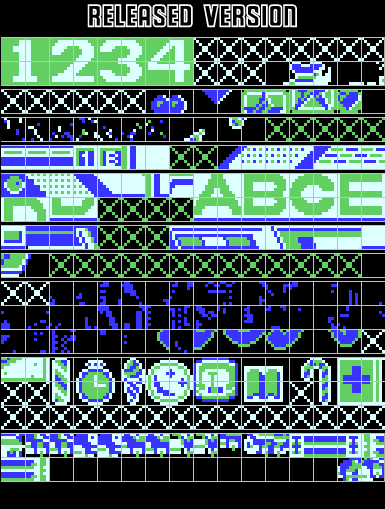
At first glance,
an incomplete version of a game like Adventures in the Magic
Kingdom might not seem like much, but for someone like me,
who grew up playing this game for hours on end and whose memories
of visiting the Disney theme parks with my family remain a high
point in my life, having this unique opportunity to view the game
take shape is a very special thing, indeed.
And for anyone
who is interested in the process of game development: Nothing
beats putting a rough draft under a microscope, examining how
a game is formed over time, especially a title coming from a big
name company like Capcom.
Think of a
game that has always fascinated you. What if there were elements
removed or changed during the development of that game? How might
have things turned out differently? Imagine if you were able to
see how the game once was (or was meant to be). Now stop imagining
because answers to those questions could be hiding in a prototype,
just waiting to be found.
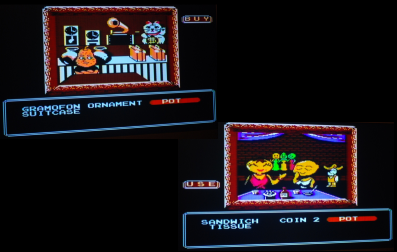
Playing a
prototype of a released game could also mean witnessing firsthand
something historically interesting like Nintendo's strict censorship
back in the day, as is seen in this Princess
Tomato in the Salad Kingdom prototype. In this version,
you can buy a clay pot, abbreviated as "POT," in stores
and choose to use it from the menu screen. The name of this item
was later changed in the final version to "VASE," presumably
because of the marijuana drug innuendo of buying and using pot.
If Nintendo made Hudson Soft change something as small and innocent
as a reference to a clay pot, imagine what other major game content
in the vast NES library might have been muffled and censored,
too.
In the case
of prototypes of games never before released, it isn't hard to
see why they are in such hot demand (and fetch much more money)—to
be able to finally play a game that has been stored away for decades is a dream of any NES player.
These are
only a few reasons why prototypes can be worth your time, money,
and effort. Now let's take a look inside of a prototype to see
how it functions.
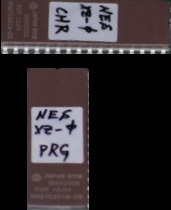
  Know
your EPROMs. Know
your EPROMs. 
The plastic
Nintendo cartridges that we've all held in our hands act like
protective shells for the circuit boards inside. These circuit
boards are called PCBs (Printed
Circuit Boards). The data found inside of the majority of prototype
carts is stored on memory chips on the PCB called EPROMs.
"EPROM" stands for Erasable Programmable Read Only Memory.

  Masked
ROMs... unmasked! Masked
ROMs... unmasked! 
Game data
found inside of nearly all regular, officially licensed
Nintendo carts is stored not on EPROMs, but rather on memory chips
on the PCB called Mask ROMs
(or Masked ROMs/ROMs/MROMs).
"MROM" stands for Mask Read Only Memory. From this point
forward, Mask ROMs/Masked ROMs will be referred to as "MROMs"
to differentiate them from the term "ROMs," which people
confuse for ROM images, or
the files you can download and play on emulators.
If I'm starting
to lose you with all of the terminology, let's step back for a
moment with an analogy.
If you're
like me and enjoy burning CDs of your favorite music, think of
MROMs as a CD+/-R, and EPROMs, as a CD+/-RW.
If you ever
burned music before on a CD-R, you'll know that you're stuck with
whatever songs you chose to put on the disc after the files have
been copied. Even if later you have second thoughts about including
Rick Astley's "Together Forever" on your Ultimate Club
Mix track list, a CD-R can only be burned once—the music
files are permenantly stored on the CD—and no amount of pointing
out the irony of being stuck forever with "Together Forever"
will ever change that.
If, instead,
you opted to use a CD-RW to burn your music CD, you could have
avoided any future regrets by placing the disc right back into
your computer drive, removing Astley, and finding a better song.
(Might I suggest Milli Vanilli's "Ma Baker" as a worthy
substitute?)
EPROMs were
the way that game developers removed their "Astley mistakes"—they
gave developers the ability to test games still in development
on an actual Nintendo system, allowing them at any time to transfer
a newer or more complete version of the game for future bug testing.
This continual process of copying (i.e. burning), testing, erasing,
and re-copying data gave developers the means to update their
games and try them out for as many times as was needed without
having to throw away one-time use MROMs (the same way as you might
have thrown away countless CD-Rs before investing in a drive compatible
with CD-RW).
Unlike permanent
MROMs, EPROMs were never meant to last for a very long time—they
were temporary solutions for testing games or flashing them quickly
to ship them out to gaming publications for previews and reviews
before the mass-produced carts were manufactured.

  Have
you covered up your EPROMs today? Have
you covered up your EPROMs today? 
A sure way
of visually differentiating an EPROM from an MROM is by seeing
if there is a small square in the middle of the chip like the
one above. This is called an EPROM window,
and it's made of quartz crystal that makes it reflective like
a hologram. Exposing this window over time to a certain amount
of UV light (like the sun's rays) will gradually erase the game
data stored on an EPROM.
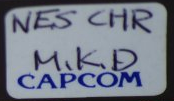
  Official
Capcom sticker on an Adventures in the Magic Kingdom proto
EPROM. Official
Capcom sticker on an Adventures in the Magic Kingdom proto
EPROM. 
To prevent
the game data from erasing, EPROMs on prototypes are often covered
with an adhesive sticker to
help block out UV light. Capcom, for example, had special company
stickers of their own made and placed over EPROM windows.
EPROMs can
also be erased over several years without any direct exposure
to UV light. Just how long it takes for the data to erase under
normal temperate conditions, without sunlight or other UV light
to progress the erasure, is a discussion that has gone on for
some time now. The slow erasing of data without exposing the EPROM
to UV light is what as known as bit rot,
and I will go more into that subject in a later section on why
it is important to dump prototypes.
EPROMs are
not unique to prototypes alone; they can be found on some other
games, as well. Several pirated
and unlicensed games, like all three of the Panesian
pornographic titles, use EPROMs. (This means that, one day, Panesian
collectors will be left with nothing but their own self shame.)
Test
carts are examples of official, non-prototype Nintendo games
using EPROMs. These were cartridges given to Nintendo Service
Centers to help diagnose console and accessory problems.
In rare cases,
there have even been reports of EPROMs being spotted in some officially
licensed and released Nintendo carts.
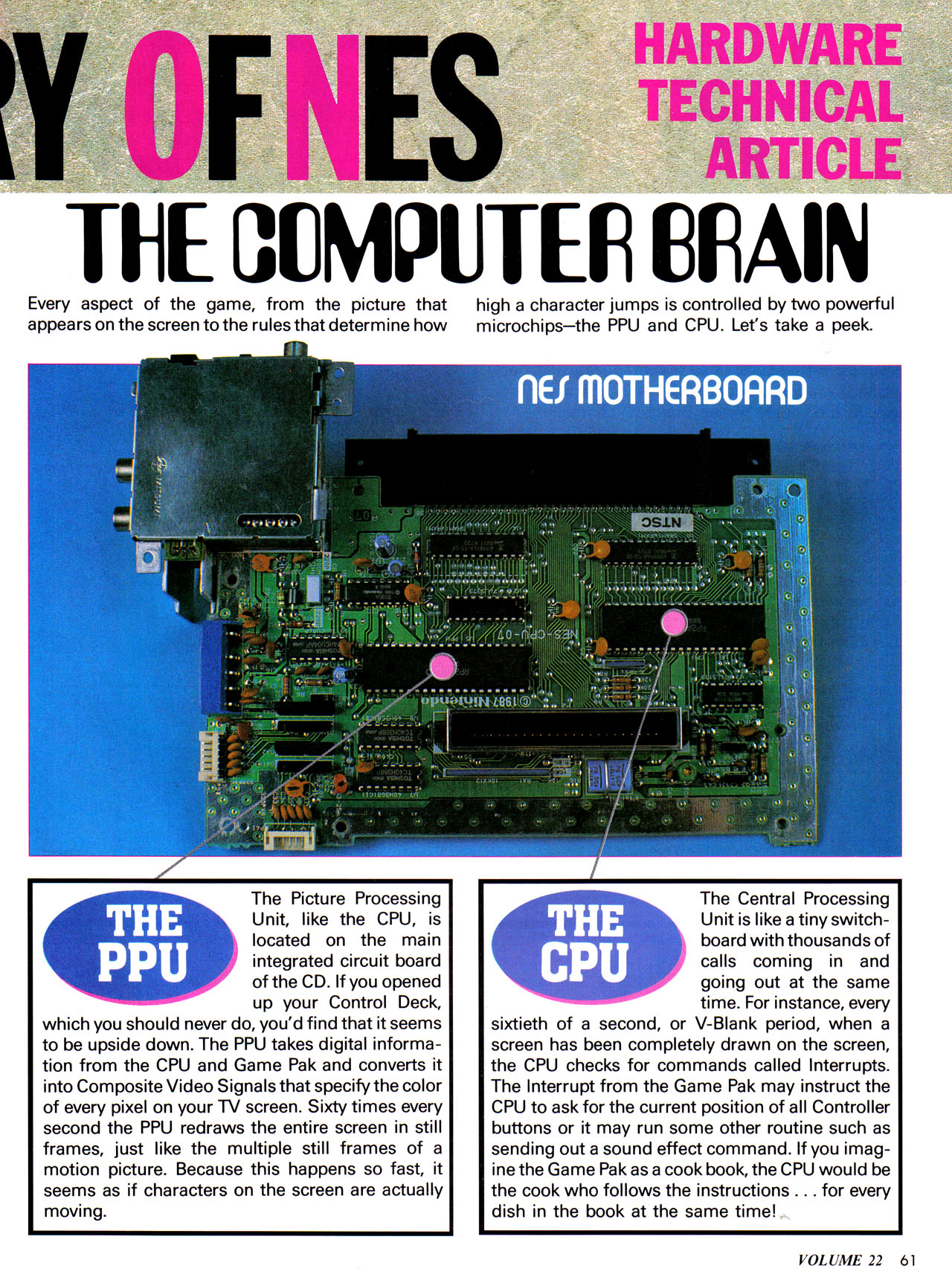
  Nintendo
Power explains the PPU and the CPU with a cooking analogy. Nintendo
Power explains the PPU and the CPU with a cooking analogy.  (Image source: RetroMags.com) (Image source: RetroMags.com)
But back to
the subject of prototypes: An EPROM in a prototype is commonly
marked on the EPROM sticker to identify the chip as either PRG
or CHR.
PRG stands
for "program," and it's, well, the program behind a
game that can be read by an NES system's CPU
(Central Processing Unit).
CHR, on the
other hand, stands for "character," and it's where all
of the graphics in a game are stored to be read by an NES system's
PPU (Picture Processing Unit).
When combined,
they form like Voltron to give you the complete NES gaming experience.
(Note that, for some games, there might only be one EPROM inside
for the PRG, with the CHR being found on a RAM chip.)
I know all
of this is a lot to take in if you're new to prototypes. You may
wish to re-read this section again to make sure you have everything
down. When you're ready to continue, the next section covers how
to find and identify authentic NES prototypes.

|

